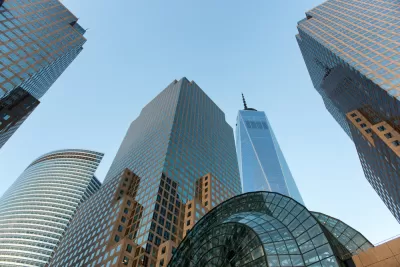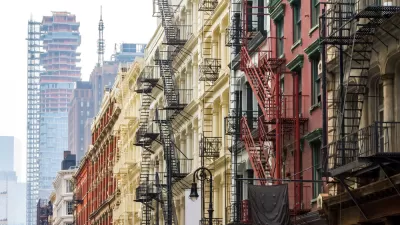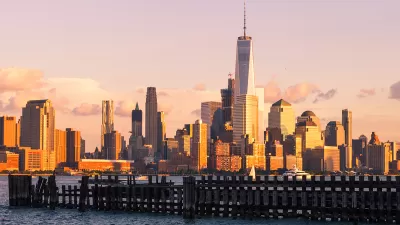Plans have been approved for the development of 5 World Trade Center, in place of a building damaged on September 11 and eventually torn down.

The final piece of the rebuilt World Trade Center is now in place.
The Port Authority of New York and New Jersey Board of Commissioners and the Lower Manhattan Development Corporation Board recently approved plans for the development of a 1.56-million-square-foot, 900-foot-tall tower designed by Kohn Pedersen Fox (KPF) and developed by Brookfield Properties and Silverstein Properties.
"The proposal for the future 1.56 million gross square foot mixed-use building currently anticipates approximately 1.2 million square feet of residential space or 1,325 residential rental units – of which 25%, or approximately 330, would be permanently affordable. The building would also include approximately 190,000 square feet of office space," according to a Port Authority press release. "[T]he building would have a 12,000 square foot community facility space, as well as 55,000 square feet of public amenity space and 7,000 square feet of retail."
In addition to being the final development to rebuild from the damage done on September 11, 2001, the new 5 World Trade Center will be the first residential project on the World Trade Center campus.
Two articles, one by Jonathan Hillburg and the other by Diane Pham, provide additional insight into process that yielded these plans for 5 World Trade Center. Hillburg also notes that the General Project Plan (GPP) for the World Trade Center complex originally had the development of 5 World Trade Center targeted for office development. "[M]odifying the GPP will take approval from the LMDC, Empire State Development Board of Directors, the Public Authorities Control Board, and the US Department of Housing and Urban Development,' state and national environmental approvals, and more," report Hillburg.
FULL STORY: KPF’s 5 World Trade Center tower officially approved

Alabama: Trump Terminates Settlements for Black Communities Harmed By Raw Sewage
Trump deemed the landmark civil rights agreement “illegal DEI and environmental justice policy.”

Study: Maui’s Plan to Convert Vacation Rentals to Long-Term Housing Could Cause Nearly $1 Billion Economic Loss
The plan would reduce visitor accommodation by 25% resulting in 1,900 jobs lost.

Why Should We Subsidize Public Transportation?
Many public transit agencies face financial stress due to rising costs, declining fare revenue, and declining subsidies. Transit advocates must provide a strong business case for increasing public transit funding.

Paris Bike Boom Leads to Steep Drop in Air Pollution
The French city’s air quality has improved dramatically in the past 20 years, coinciding with a growth in cycling.

Why Housing Costs More to Build in California Than in Texas
Hard costs like labor and materials combined with ‘soft’ costs such as permitting make building in the San Francisco Bay Area almost three times as costly as in Texas cities.

San Diego County Sees a Rise in Urban Coyotes
San Diego County experiences a rise in urban coyotes, as sightings become prevalent throughout its urban neighbourhoods and surrounding areas.
Urban Design for Planners 1: Software Tools
This six-course series explores essential urban design concepts using open source software and equips planners with the tools they need to participate fully in the urban design process.
Planning for Universal Design
Learn the tools for implementing Universal Design in planning regulations.
Smith Gee Studio
Alamo Area Metropolitan Planning Organization
City of Santa Clarita
Institute for Housing and Urban Development Studies (IHS)
City of Grandview
Harvard GSD Executive Education
Toledo-Lucas County Plan Commissions
Salt Lake City
NYU Wagner Graduate School of Public Service





























